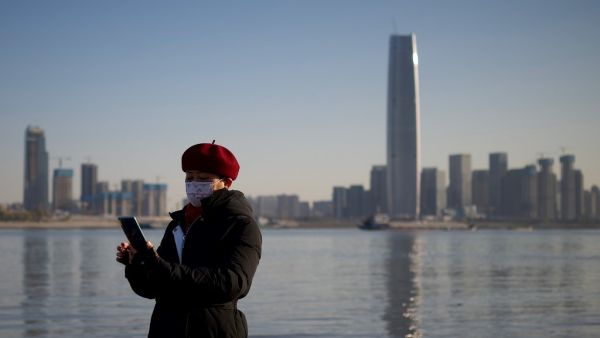An expert mission to China to find the origins of the Coronavirus pandemic has stumbled before it even began, with the head of the World Health Organization complaining that Beijing was blocking the team from entering the country.
WHO chief Tedros Adhanom Ghebreyesus said he was "very disappointed" with the last-minute bar on entry, in a rare castigation of Beijing from the UN body.
A 10-strong team was due to arrive in China this week after months of painstaking negotiations.
The World Health Organization is "disappointed" that, a full year after the coronavirus broke out in Wuhan, the Chinese government is still stalling on the permissions needed for a @WHO team to investigate the origins of the virus. https://t.co/UPGG8epbQd pic.twitter.com/2iyUlpT5cG
— Kenneth Roth (@KenRoth) January 5, 2021
Beijing is determined to control the origin story of the virus, which has killed more than 1.8 million people so far and laid waste to global economies.
Speculation over China's handling of pandemic
The first cases of the Coronavirus were recorded in the central Chinese city of Wuhan in late 2019, prompting accusations of chaotic, secretive handling by Chinese authorities which led to its spread beyond China.
US President Donald Trump called the pandemic the "Chinese virus."
But Beijing has so far resisted pressure for a full independent probe into the early days of the outbreak. Instead, it has seeded doubt as to whether the pandemic even started inside its borders.
The WHO mission was billed as a way to cut through the rancour and seek clear answers on how the virus jumped from animals to humans.
But with some of the team already in transit, Beijing had yet to grant them entry, the WHO chief said.
"Today, we learned that Chinese officials have not yet finalised the necessary permissions for the team's arrivals in China," Tedros told reporters on Tuesday.
"I am very disappointed with this news, given that two members had already begun their journeys and others were not able to travel at the last minute."
He stressed that he had been in contact with senior Chinese officials to make clear "that the mission is a priority for WHO and the international team."
"Lastly, over the past 24 hours, members of the international scientific team on #COVID19 virus origins began traveling from their home countries to #China"-@DrTedros
— World Health Organization (WHO) (@WHO) January 5, 2021
"I have been assured that China is speeding up the internal procedure for the earliest possible deployment," Tedros added.
The mission was hugely sensitive and neither the WHO nor China had until now confirmed when specifically it was due to start.
WHO emergencies director Michael Ryan told Tuesday's briefing that the problem was a lack of visa clearances. "We trust and we hope that this is just a (logistical) and bureaucratic issue that can be resolved very quickly."
There was no immediate comment from China.
Finding answers
"We were all operating on the understanding that the team would begin deployment today," he said, adding that two members of the team coming from far away had set off early Tuesday, before it became clear that the necessary approvals had not been received.
He stressed the "absolute critical nature" of the mission, acknowledging that the situation was "frustrating and... disappointing."
The origins of Covid-19 remain bitterly contested, lost in a fog of recriminations and conjecture from the international community -- as well as obfuscation from Chinese authorities determined to keep control of the virus narrative.
Scientists initially believed the virus jumped to humans at a market selling exotic animals for meat in the city of Wuhan.
But experts now think the market may not have been the origin of the outbreak, but rather a place where it was amplified.
Chinese Foreign Minister Wang Yi said recently that “more and more research suggests that the pandemic was likely to have been caused by separate outbreaks in multiple places in the world.”
It is widely assumed that the virus originally came from bats, but the intermediate animal host that transmitted it between bats and humans remains unknown.
This article has been adapted from its original source.








